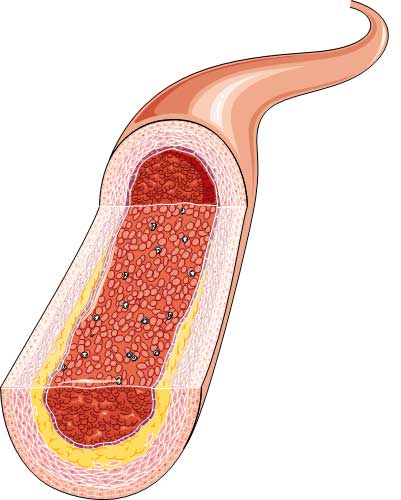
26th June 2022, Dr Chee L Khoo
I was recently tasked with preparing a lecture on the current guidelines for lipid management in patients with diabetes. I thought it was quite straight forward. We have known for some years now that the targets are tighter than patients without diabetes. Thus, it can’t be that hard. As I looked into national and international guidelines, they started to get more and more complicated. Suddenly, I realised that I have not actually been practising according to guidelines. Sometimes, I do practise according to guidelines but that was just by accident. How well do you know the guidelines? Are you practising according to the latest guidelines? What are the latest guidelines anyway?
Managing lipids is not as straight forward as you think. Before we think about what targets we should be aiming for, there are a few preliminary steps before we get to targets. There are actually 4 steps to managing lipids in patients with diabetes:
- Assess CV risk of the patient
We know all about the Australian absolute cardiovascular risk calculator (www.cvdcheck.org.au) which is based on the original Framingham Risk Equation and recalibrated using local data. Absolute CVD risk refers to the likelihood of a person experiencing a cardiovascular event within the next five years.
It used to be thought that patients with diabetes is automatically high risk of cardiovascular events. It was even suggested that by having diabetes, the CV risk is almost as high as that of someone who already had a CV event. Nope, we don’t think like that anymore. A risk score of >15% is considered high risk, <10% is considered low risk and 10-15% is intermediate risk.
There are a few caveats here, though. The risk calculator should be used should be performed for adults aged 45–74 years who are not known to have CVD or to be at clinically determined high risk.
There are patients are considered automatically high risk and we don’t need to do any risk calculations:
- Known CVD
- Diabetes and age >60 years
- Diabetes with microalbuminuria
- Moderate or severe CKD (eGFR <45)
- A previous Dx of familial hypercholesterolaemia
- Systolic BP ≥180 mmHg or diastolic BP ≥110 mmHg
- Serum total cholesterol >7.5 mmol/L
Patients who have retinopathy, peripheral arterial disease, possibly, atrial fibrillation and non-alcoholic fatty liver disease (NAFLD) are at high risk of cardiovascular events and you might want to consider them as high risk.
- Determine the dosage of statins – high dose or low dose statins
Once you have determined the risk profile of the patient, you can now determine how high a dose of statins the patient need. The Australian guidelines does not have this step but according to the American Diabetes Association (ADA):
- T2D 20–39 years with ASCVD risk factors, …initiate statin therapy
- T2D 40–75 years without ASCVD – moderate-intensity statin
- T2D 50–70 years or multiple ASCVD risk factors, – high-intensity statin.
- T2D and 10-year ASCVD risk ≥ 20%, add ezetimibe to maximally tolerated statin therapy to reduce LDL-C by ≥ 50%
- Determine the targets to aim for
According to the (Australian) Heart Foundation’s Guidelines for the Management of Absolute Cardiovascular Disease risk, pharmacotherapy for lipid lowering should aim towards the following targets while balancing the risks/benefits:
- TC <4.0 mmol/L
- HDL-C ≥1.0 mmol/L
- LDL-C <2.0 mmol/L
- Non-HDL-C <2.5 mmol/L
- TG <2.0 mmol/L
According to the RACGP’s Management of type 2 diabetes: A handbook for general practice, these are the targets:
- TC <4.0 mmol/L
- HDL-C ≥1.0 mmol/L
- <2.0 mmol/L; <1.8 mmol/L if established CVD is present
- Non-HDL-C <2.5 mmol/L
- TG <2.0 mmol/L
The ADA have similar targets although they do suggest that in patients with T2D and clinical ASCVD, use high intensity statins to lower LDL-C by 50%.
The reason why there is a difference between the guidelines with target setting is that while there is evidence that the more intensive lipid lowering, the greater the cardiovascular benefits are, there are no clinical trials that have evaluated the relative and absolute benefits of cholesterol lowering to different TC and LDL-C targets in relation to clinical events. Establishing a cholesterol target for therapy is therefore, an extrapolation from the apparent benefits indicated by major trials of lipid lowering.
- Determine what other agents are necessary to get to target
If the above targets are not met with maximum tolerated statins, consider adding:
- Ezetimibe
- PCSK9 inhibitors if patient qualify under PBS
- bile acid binding resins, or
- nicotinic acid
The evidence behind the above recommendations is not all level A evidence. Some recommendations are consensus-based recommendations. Evidence continues to be evolving and we need to keep up to date as new evidence emerge over time.
You will have a chance to participate in discussions with A/Prof Christian Mussap and Dr Jay Ramanathan on “Why and how to implement combination lipid lowering therapy” on Wednesday 20th July at the Holiday Inn, Warwick Farm. For details and registration, click here.
References:
- https://www.heartfoundation.org.au/getmedia/4342a70f-4487-496e-bbb0-dae33a47fcb2/Absolute-CVD-Risk-Full-Guidelines_2.pdf. Accessed 19th June 2022.
- Cardiovascular Disease and Risk Management: Standards of Medical Care in Diabetes—2021 ADA. Diabetes Care 2021;44(Supplement_1): S125–S150
- https://www.racgp.org.au/getattachment/41fee8dc-7f97-4f87-9d90-b7af337af778/Management-of-type-2-diabetes-A-handbook-for-general-practice.aspx
